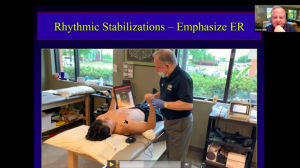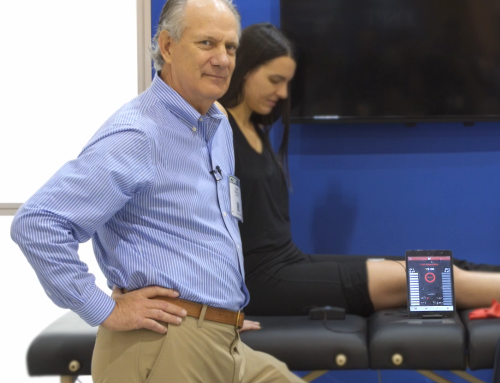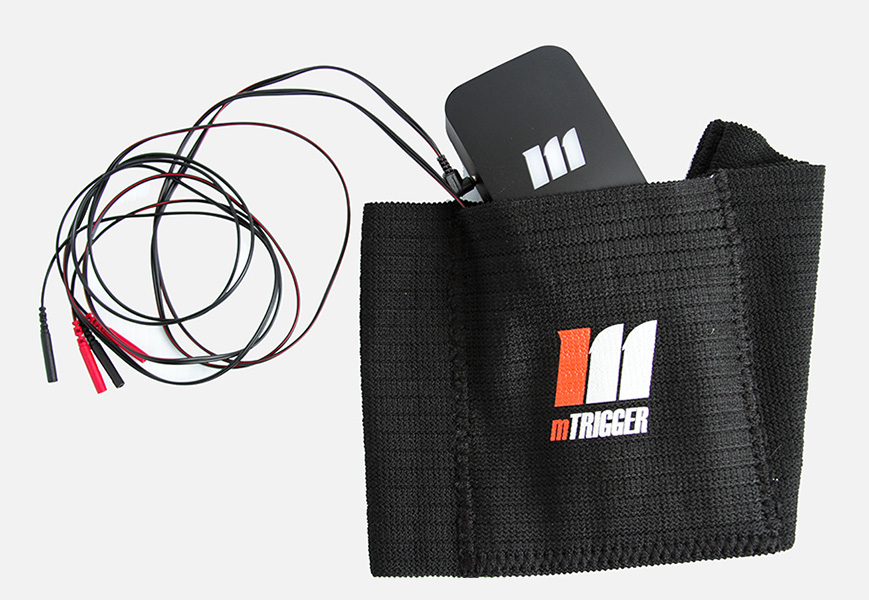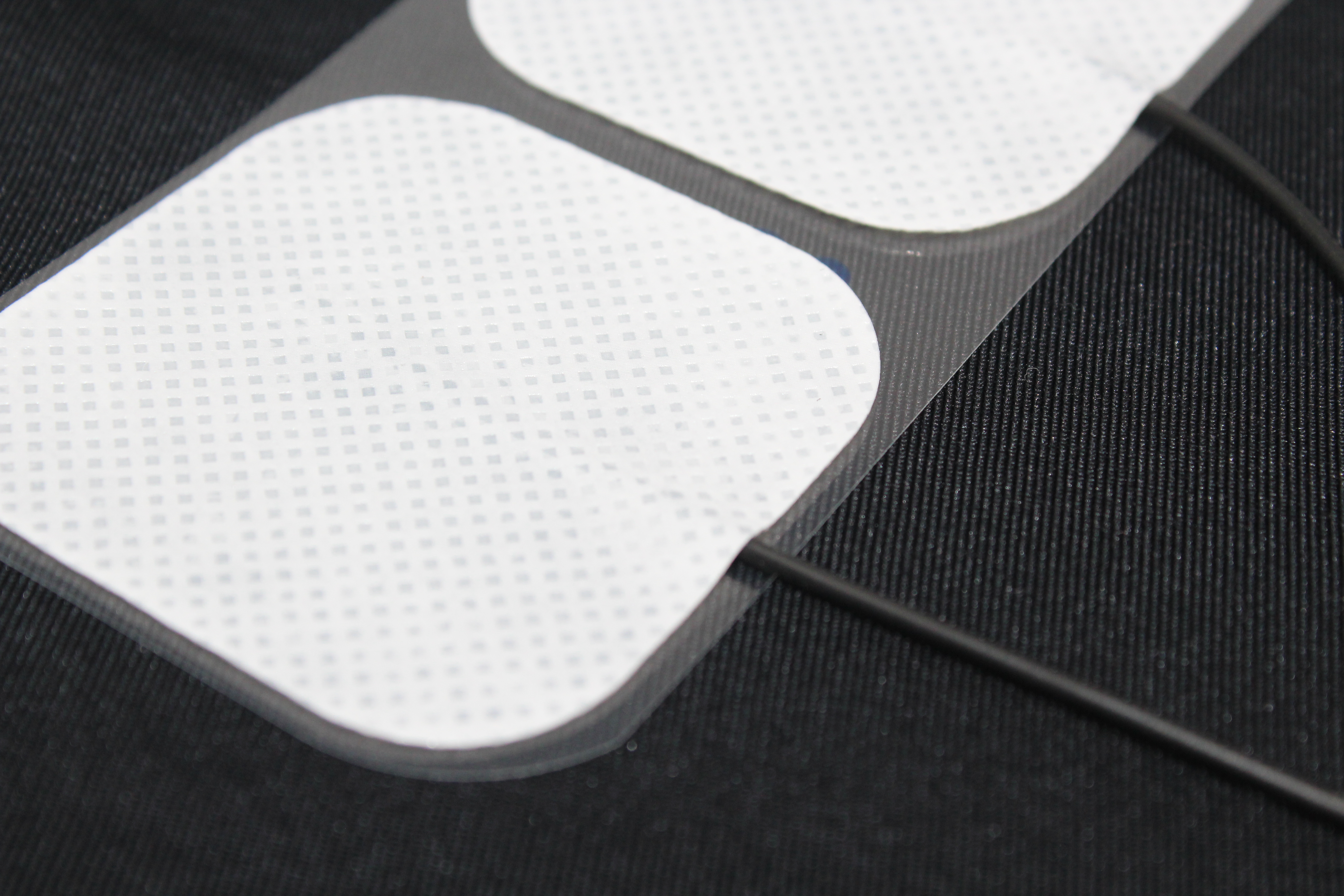While targeting one muscle with basic isometrics is a great place to start with mTrigger biofeedback, dual channel monitoring opens a world of new possibilities. Whether using biofeedback to help identify areas of concern, show patients poor movement patterns, or demonstrate progress towards their goals in real time, mTrigger can provide a wealth of information. This information can improve clinical decision-making, performance, and ultimately patient outcomes. By improving awareness of activation in multiple muscles, mTrigger can provide nuanced, customized feedback that helps you and your patients get more out of every rep performed.
The best way to use dual channel feedback, can be broken down into TWO categories:
- Activation Ratio Monitoring – looking at the ratio and timing of activation between two different muscles, generally on the same side of the body. For example, upper trap and lower trap.
- Bilateral Activation – comparing the timing and activation of the same muscle on either side of the body. For example, left quad and right quad during a squat.
Now let’s go through some examples of dual channel applications!
ACTIVATION RATIO MONITORING
Compare activation levels of 2 target muscles simultaneously. Consider these configurations:
- Compensation
EXAMPLE: Upper trap vs lower trap activation levels during shoulder exercises
- Co-contraction
EXAMPLE: View activation of muscles that work together to perform a movement – like the brachioradialis and the biceps during elbow flexion, the quads and hamstrings during knee extension, or shoulder stabilizers during rhythmic stabilization (see below) – to identify imbalances and improve awareness of activation.

- Activation level awareness
EXAMPLE: Hamstrings over activating for the quad muscle during a quad set.
- Isolations within a muscle group
EXAMPLE: Identify activation of the VMO compared to the rectus femoris during quad sets. For this set up, you would place one channel on the VMO and one channel on the rectus femoris. Then instruct the patient to perform a quad set. Since you are targeting VMO, you want to see the meter on the VMO channel equal or higher than the rectus femoris channel. Make sure your MVC goals are matched in this case so you get accurate results.
- Agonist/Antagonist
EXAMPLE: Display activation – during both rest and active movement – in the biceps and triceps during elbow extension to improve simultaneous activation and relaxation of antagonistic muscle pairs; of particular interest in spinal cord injury cases.
- Tonicity balancing
EXAMPLE: Monitor resting tone during stretching or manual therapy work to keep tonicity low or encourage active inhibition during functional movements that recruit other muscle groups. Keep an eye on spinal erector tonicity to reduce back pain while encouraging activation and strengthening of the glutes.
BILATERAL ACTIVATION
- Symmetry Assessment – Neuromuscular Deficit Test (Isometric or Isotonic)
EXAMPLE: The Neuromuscular Deficit Test identifies the deficit in voluntary activation level of the involved muscle compared to its normal/healthy contralateral counterpart. This can be an excellent metric for documenting progress or assessing return to sport readiness. This assessment can be done as an isometric contraction (ie: glute bridge hold) or as an isotonic contraction during the testing period (ie: single leg squat)
*Keep potential dominance effect in mind here
- Real-time side-to-side engagement
EXAMPLE: Performing a squat in dual channel mode to monitor the symmetry of quad activation and to avoid a weight shift.
Summary
The options for dual channel feedback application are numerous and can provide a valuable level of customization to your rehab programs. Now that the ideas are flowing, get creative with your dual channel applications – and don’t forget to tag us on social so we can see what you’re up to! If you need a refresher on Single vs. Dual Channel Modes, check out our Settings training video HERE!
For More Ideas, Join our Email List
|
Suggested Electrode Placement Guide
|








Leave A Comment